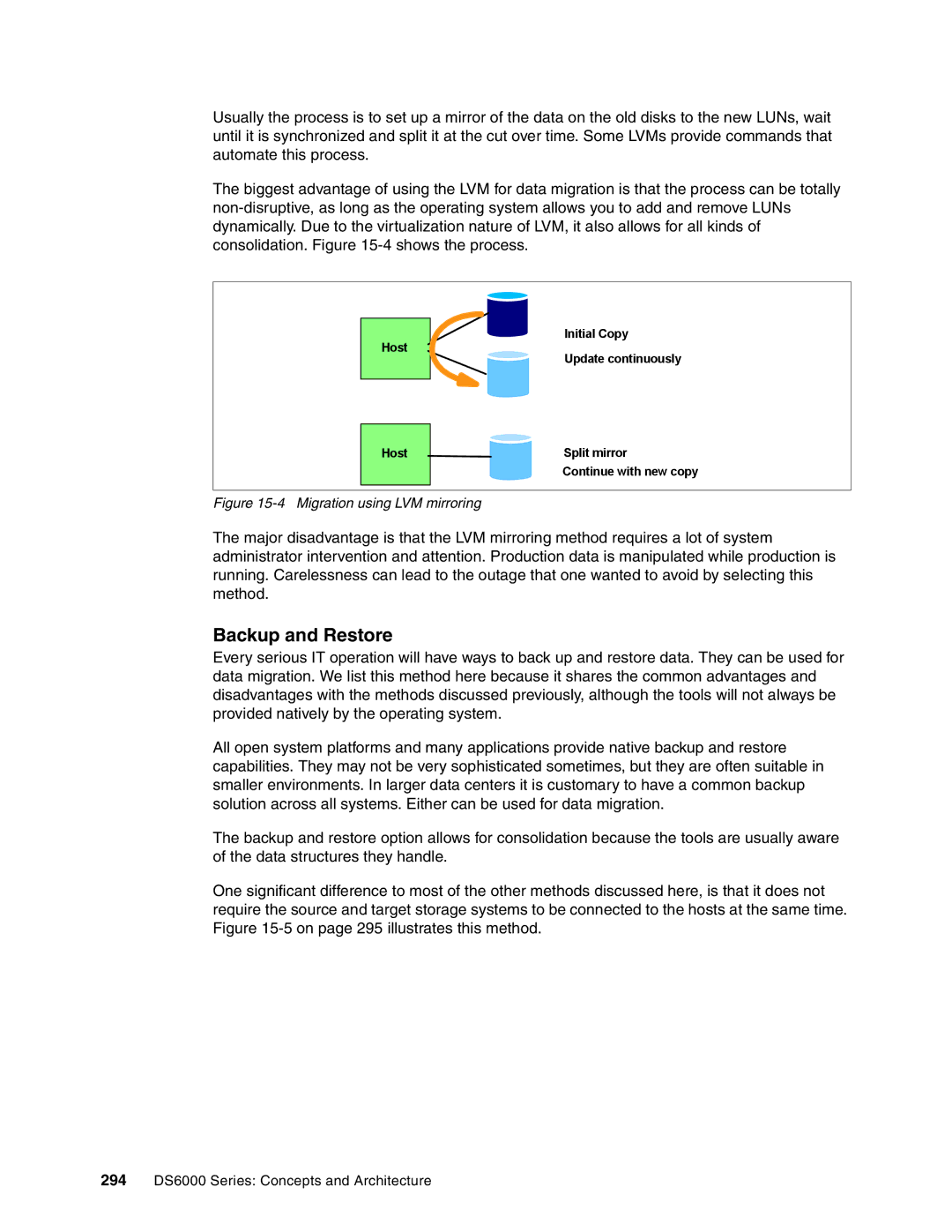
Usually the process is to set up a mirror of the data on the old disks to the new LUNs, wait until it is synchronized and split it at the cut over time. Some LVMs provide commands that automate this process.
The biggest advantage of using the LVM for data migration is that the process can be totally
Host
Host
Initial Copy
Update continuously
Split mirror
Continue with new copy
Figure 15-4 Migration using LVM mirroring
The major disadvantage is that the LVM mirroring method requires a lot of system administrator intervention and attention. Production data is manipulated while production is running. Carelessness can lead to the outage that one wanted to avoid by selecting this method.
Backup and Restore
Every serious IT operation will have ways to back up and restore data. They can be used for data migration. We list this method here because it shares the common advantages and disadvantages with the methods discussed previously, although the tools will not always be provided natively by the operating system.
All open system platforms and many applications provide native backup and restore capabilities. They may not be very sophisticated sometimes, but they are often suitable in smaller environments. In larger data centers it is customary to have a common backup solution across all systems. Either can be used for data migration.
The backup and restore option allows for consolidation because the tools are usually aware of the data structures they handle.
One significant difference to most of the other methods discussed here, is that it does not require the source and target storage systems to be connected to the hosts at the same time. Figure
